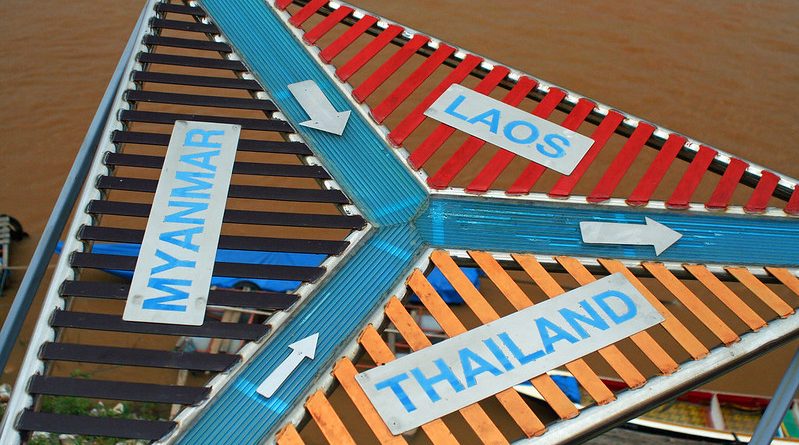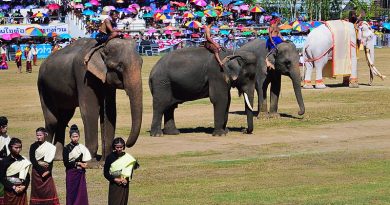Trekking the Golden Triangle
Trek Essentials
Where: North Laos, southeast asia, part of the infamous ‘golden triangle’
Best Season: Rainy season for lush and vibrant landscapes
Remember to Bring: Sarong, sunblock, mosie repellent and water
Watch out for: Opium & marijuana dealers – you could end up in Laos longer than yuo thought!
Trekking in Northern Thailand is well established on the tourist itinerary and as such is both well organised and over-crowded. Northern Laos offers similar experiences with fewer tourists, although of course numbers are now on the rise as the lure of tranquil landscapes and remote hill tribe cultures works its magic on the traveller circuit.
Treks are typically one to three days in length and have to be undertaken with a guide. Trekking guide is a popular profession in northern Laos and government schemes ensure guides are well-trained and proficient in English. Expect to marvel at the sight of luminous green padi fields, sprinkled with tiny wooden storage huts on stilts, while shadowy limestone hills loom behind. Treks are sweaty, yet stimulating, and the opportunity to stay as a guest (and as a potential purchaser of locally-made handicrafts) in a hill tribe village is still novel for both trekkers and villagers alike.
Where and When to Go
A small, sleepy village in the very north of Laos, near the borders to China and Myanmar (Burma),Muang Sing is fast being established as a popular base for trekkers. If you are heading north purely to do some trekking (and can’t handle the thought of taking another bumpy ride in the back of a pick-up truck!), you could always stop further south at Luang Nam Tha, where treks are easily organised. Muang Sing is more picturesque in itself, however, and is well worth the extra effort.
The highlands provide some respite from the heat in the dry season, but the landscapes are at their most lush and vibrant during the rainy season. If trekking during the winter months remember to pack a jumper for the cool nights.
What To Bring
Wear light and loose clothing with sturdy boots and thick socks. Bring a sarong or large towel to wash in – often the only place to wash in the villages will be very public, and there will be plenty of curious children around! As with all trekking, always carry a basic first-aid kit. Mosquito repellent is a must, as is sun block, a hat and plenty of water. Bring some money (in kip) to buy souvenirs and bottled water. And of course, don’t forget your camera!
Dos and Don’ts
Recent monitoring of the effects of tourism in Laos has led to the government issuing a set of guidelines for trekkers, which are clearly displayed in all the hotels and cafes in Muang Sing. Here are a few basics:
DO:
– Show respect – greet people with the Lao ‘wai’ greeting (palms pressed together in front of your face and a small bow) and smile.
– Ask permission before taking photographs.
– Dress modestly. Remember, long loose clothing will also offer you more protection against the sun.
DON’T:
– Give away money, even to children – it encourages begging and may be construed as insulting.
– Be over-familiar with either hosts or friends. Kissing and embracing are kept private in Lao culture and overt displays of affection may shock and offend people.
– Gesture with your feet or touch a person on the head. Not all hill tribe cultures are Buddhist, but at the very least your Lao guide will not take kindly to such disrespect shown towards his beliefs.
Drugs
As part of the infamous “Golden Triangle”, opium and marijuana are both grown and used in this area of Laos, but the recommendation is not to get involved with them. The government have tightened their laws regarding penalties for foreigners who purchase drugs, not to mention the locals who sell them. Besides which, do remember that while you may be tempted to experiment for a few days whilst on holiday, the locals live here all their lives and are likely to be influenced in many ways by tourists, who are becoming their main source of income.
Hill Tribes
The population of Laos is relatively small, but is incredibly diverse, with 68 different official ethnic groups. Highland areas are dominated by the Hmong and Mien groups, with smaller groups ofKaren, Akha, Lisu, Lahu and Lolo people also featuring. Each tribe has its own distinct customs, celebrations, dress and language. Mostly nomadic or semi-nomadic, they are historically border people whose roots lie not only in Laos but also in China, Tibet, Thailand, Myanmar, Cambodia. Many do not speak Lao, so it is best to find a guide who can speak the local dialects.
More Information
Sabbai Dee and Welcome: Lao People
This page on the popular tourist website offers further details on the hill tribe people whom you can expect to encounter on your treks.
Trekking, Mountain Biking and Boating in Luang Namtha
Part of the website for the eco-tourism lodge in Luang Namtha called The Boat Landing, these pages offers pre-booked trekking options along with travel maps, tips and visitors’ comments.
The Hall of Opium: Golden Triangle Park
Interesting website for the Doi Tung project which aims to rehabilitate the countryside and its inhabitants around the Golden Triangle area in north Thailand. Includes information on the history of the Golden Triangle.




